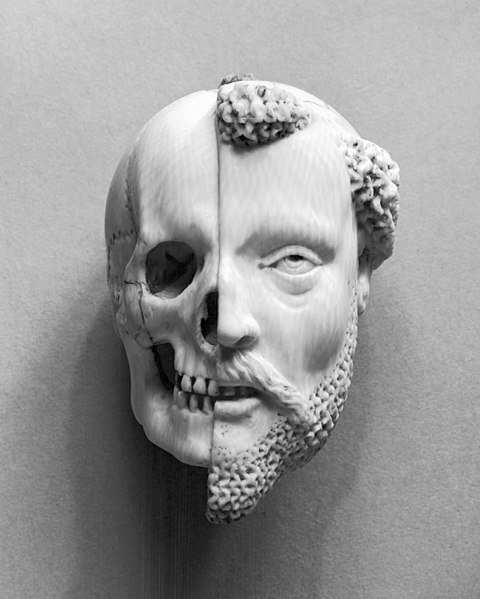Extinction is the termination of a taxon by the death of its last member. A taxon may become functionally extinct before the death of its last member if it loses the capacity to reproduce and recover. Because a species' potential range may be very large, determining this moment is difficult, and is usually done retrospectively. This difficulty leads to phenomena such as Lazarus taxa, where a species presumed extinct abruptly "reappears" after a period of apparent absence.
Extinction
The thylacine (Thylacinus cynocephalus) is an example of an extinct species.
External mold of the extinct Lepidodendron from the Upper Carboniferous of Ohio
The dodo of Mauritius, shown here in a 1626 illustration by Roelant Savery, is an often-cited example of modern extinction.
Death is the irreversible cessation of all biological functions that sustain a living organism. The remains of a former organism normally begin to decompose shortly after death. Death eventually and inevitably occurs in all organisms. Some organisms, such as Turritopsis dohrnii, are biologically immortal, however they can still die from means other than aging. Death is generally applied to whole organisms; the equivalent for individual components of an organism, such as cells or tissues, is necrosis. Something that is not considered an organism, such as a virus, can be physically destroyed but is not said to die, as a virus is not considered alive in the first place.
The human skull is used universally as a symbol of death.
A flower, a skull, and an hourglass stand for life, death, and time in this 17th-century painting by Philippe de Champaigne.
French – 16th-/17th-century ivory pendant, Monk and Death, recalling mortality and the certainty of death (Walters Art Museum)
The Premature Burial, Antoine Wiertz's painting of a man buried alive, 1854








